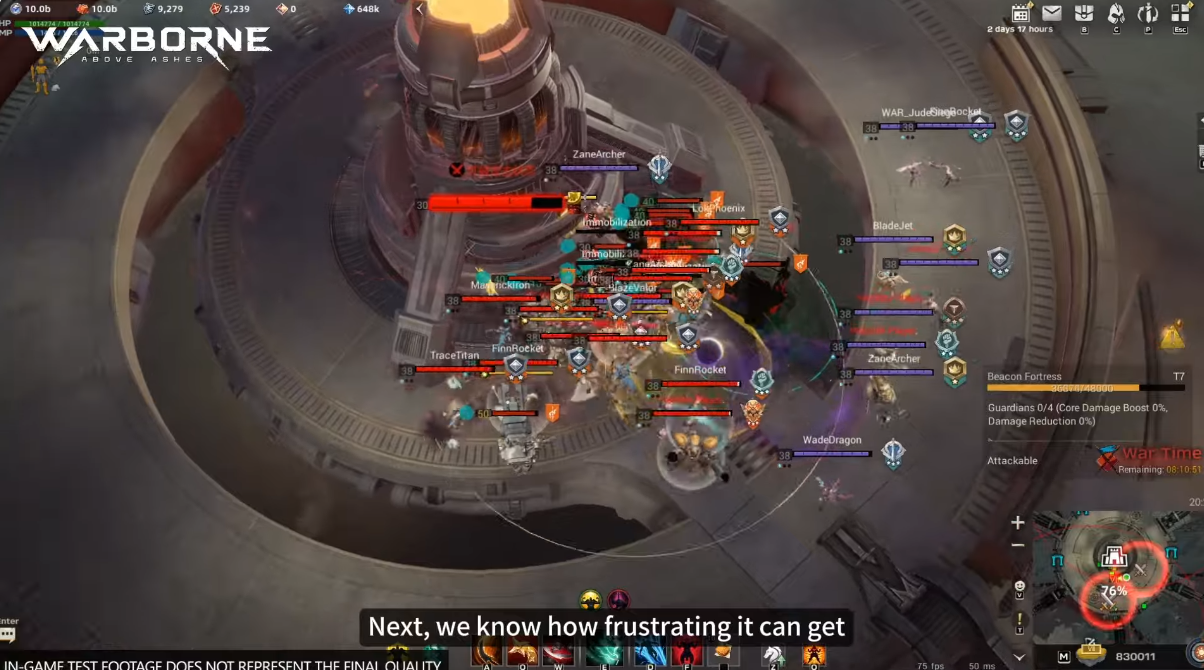MMoexp: Warborne’s Living World of Conflict and Control

In an industry oversaturated with high-fantasy MMORPGs that offer variations of the same core mechanics—grind-heavy progression loops, sprawling but underutilized open worlds, and cosmetic-heavy monetization—Warborne Above Ashes Solarbite arrives like a meteor through a stagnant sky. This ambitious PC-exclusive massively multiplayer online game abandons the genre's typical tropes in favor of something much rarer: depth, originality, and long-term consequence.
Crafted by a team of developers clearly dissatisfied with the status quo, Warborne combines a science-fiction setting with post-apocalyptic themes, weaving elements of tactical warfare, factional diplomacy, and a living, ever-changing world that reacts to the actions of its players. More than just a fresh coat of paint, this is a reengineering of what an MMO can be.
A World Built from Ruins
Set in the remnants of a planet devastated by a mysterious cataclysm known as the Ashfall, Warborne eschews traditional fantasy backdrops for rusting megastructures, shattered skylines, and irradiated wastelands. It’s a setting that immediately feels both alien and believable—equal parts “The Expanse” and “Mad Max.”
Rather than clinging to medieval-style guilds and kingdoms, the world of Warborne is divided into emergent city-states and warbands. These are governed not by NPC monarchs, but by players—an important distinction that sets the game’s socio-political mechanics apart. There are no static capitals or predetermined storylines. Everything can change, and often does, depending on who holds power and how they wield it.
This player-driven governance structure isn't just cosmetic. Owning territory means managing resources, defending borders, negotiating trade routes, and potentially declaring war. Every alliance made—or broken—can shift the balance of power on a server-wide scale.
Tactical Warfare, Not Button Mashing
If there’s one area where Warborne makes its most revolutionary stride, it’s in combat. Most MMOs rely on real-time action systems or tab-targeting rotations. Warborne rejects both in favor of a tactical, squad-based combat model that resembles XCOM or Company of Heroes more than World of Warcraft. Every player commands a customizable strike team of units—ranging from stealth operatives to heavily-armored exo-suits—and battles take place in instanced arenas that demand positioning, terrain awareness, and forward-thinking strategy.
Success is not determined by who has the best gear or highest level, but by who uses their available assets most intelligently. This lowers the barrier to entry for new players while rewarding long-term mastery of unit synergy, timing, and reconnaissance.
Moreover, each skirmish has real implications. Win a strategic outpost skirmish, and your faction gains access to rare materials or a crucial travel corridor. Lose one, and you may open your capital to a full-scale siege. It's a dynamic that injects tension into every encounter—not just for the participants, but for the larger network of allies and enemies watching the result.
Faction Diplomacy and a Living Political Ecosystem
The term “player-driven” is often thrown around in MMO marketing, but few games actually deliver on it. In Warborne, player actions shape the world in literal and mechanical ways. Factions rise and fall, trade routes form and dissolve, alliances are forged and betrayed—not because a quest said so, but because players made it happen.
Each server operates like a living organism, where the decisions of a few influential leaders can ripple outwards. One warband may control an energy refinery critical to all others. Another may offer neutral ground for arbitration. These kinds of relationships are not dictated by the developers but emerge naturally from the game’s systems and the choices players make within them.
There are even dedicated tools for diplomacy: a branching alliance tree that tracks political history, in-game communications infrastructure for cross-faction discussions, and mechanics for treaties, embargoes, and shared infrastructure. Think EVE Online but with fewer spreadsheets and more intuitive UX design.
The Cycle of Conflict and Rebirth
Central to Warborne’s long-term design philosophy is its cyclical conflict system. Rather than letting power consolidate endlessly, every “season” of the game ends in a climactic event—a massive, server-wide conflict or environmental reset—that reshapes the world. Known as the Scorching, these apocalyptic resets aren’t just narrative devices; they are gameplay keystones that ensure no single faction can dominate indefinitely.
When the Scorching occurs, maps are redrawn, cities are wiped clean or reshuffled, and technology trees may mutate based on prior player choices. This guarantees that each new cycle of gameplay offers a fresh strategic landscape while preserving player identities, progression, and alliances. The result is a sandbox where history matters, but staleness is prevented by design.
It also adds a layer of existential drama: you may fight not just to win, but to ensure your city’s legacy carries forward into the next iteration. Entire playstyles emerge around surviving the end-times, or ensuring your faction’s philosophy is seeded into the reborn world.
Deep Progression Without the Grind
Unlike most MMOs that hinge on endless leveling and loot-hunting, Warborne implements a modular progression system. Instead of acquiring better numbers, players unlock strategic options: new unit types, technologies, doctrines, and logistical capabilities. A high-level player may not have vastly superior stats—but they will have access to more nuanced and powerful tactical combinations.
This approach keeps PvP fair and dynamic, while making PvE meaningful. Exploration isn't just about ticking boxes on a map—it's about unearthing ancient technologies, dormant facilities, and lore-rich anomalies that can fundamentally alter how your faction operates.
Even crafting avoids the usual tedium. It's a decentralized, collaborative process that encourages trade, espionage, and regional specializations. A desert faction might excel in solar tech, while a tundra enclave produces high-grade alloys. Economic dominance becomes a legitimate win condition for factions that prefer commerce to conquest.
A Vision Realized Through Community
A large part of Warborne’s success so far has come from its transparent and responsive development cycle. The team behind the game runs weekly community roundtables, publishes dev logs that dig deep into mechanical tweaks, and offers voting systems that allow players to influence upcoming features. This dialogue between creators and community feels refreshingly earnest, especially in an age where many MMOs hide behind PR speak and roadmap vagaries.
In closed beta and early access phases, player feedback has already resulted in overhauls to the UI, streamlining of economic systems, and even the introduction of mobile command options for out-of-game strategic management. It's clear the developers see Warborne not as a product to sell, but as an evolving platform for collaborative worldbuilding.
Conclusion: A Brave New MMO
Warborne: Above Ashes is not a game for those looking for comfort-zone experiences. It doesn’t hold your hand, and it doesn’t pretend your actions don’t matter. It asks you to think, to plan, to coordinate—and rewards you not with flashy gear, but with genuine influence over a living world.
It’s a bold departure from the MMO norm, one that reimagines conflict, community, and consequence in a genre that desperately needed innovation buy WAA Solarbite. For those who have long hungered for a virtual world where politics matter, strategy beats grind, and the landscape evolves with its players, Warborne doesn’t just rise above the ashes of past MMOs—it offers a glimpse of the genre’s future.
- Art
- Causes
- Crafts
- Dance
- Drinks
- Film
- Fitness
- Food
- Juegos
- Gardening
- Health
- Home
- Literature
- Music
- Networking
- Other
- Party
- Religion
- Shopping
- Sports
- Theater
- Wellness

